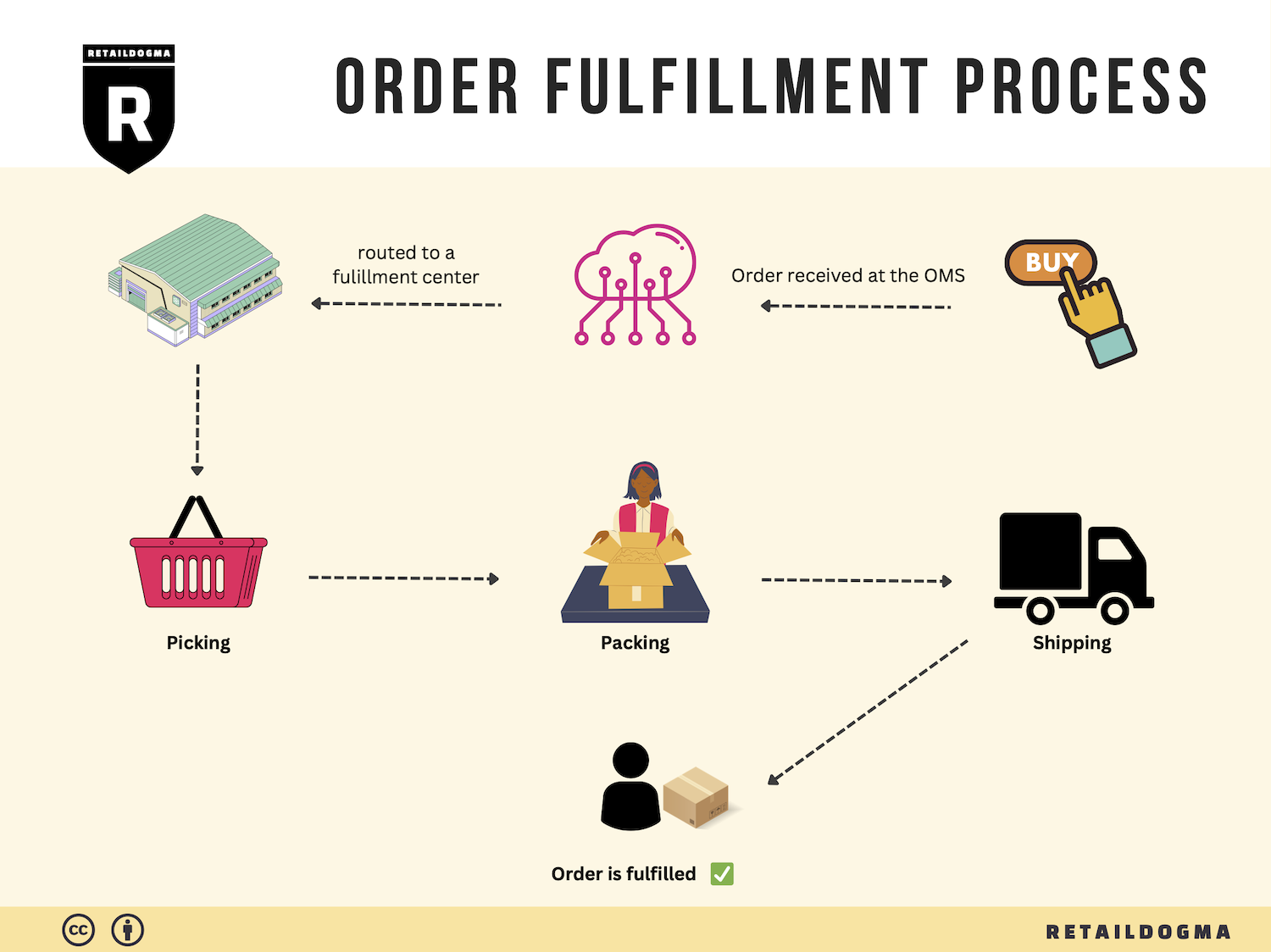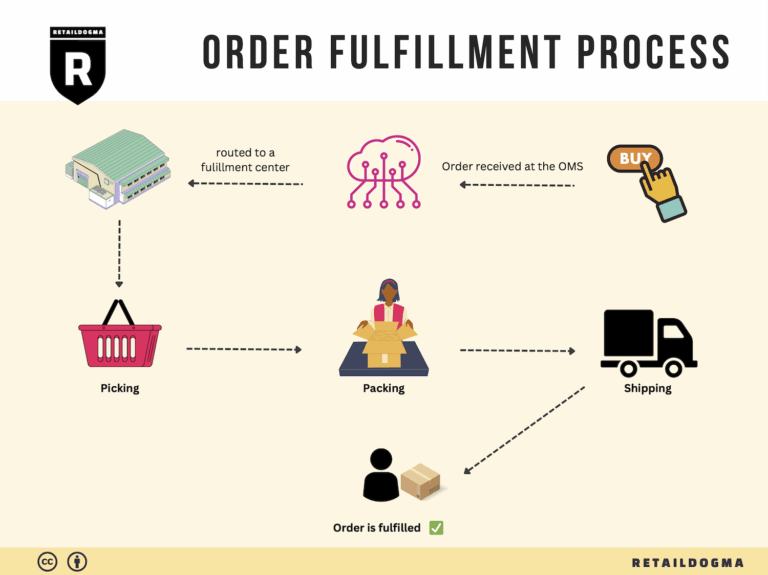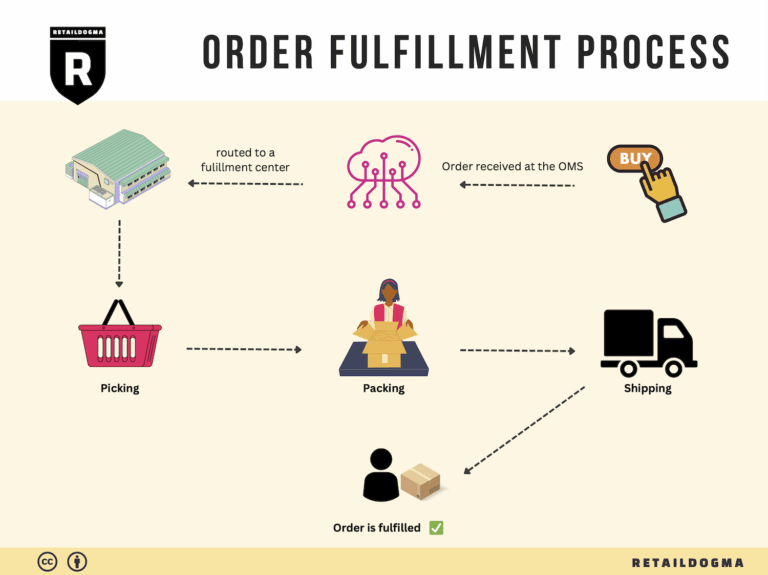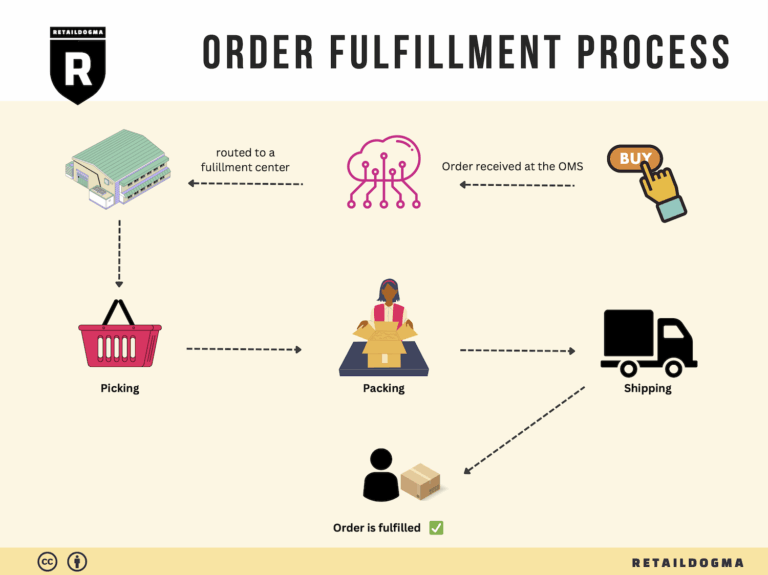How Order Fulfillment Works: A Step-by-Step Guide for Businesses
What is E-commerce Fulfillment? An Introduction for Growing Businesses
Understanding E-commerce Fulfillment: A Key to Scaling Your Business
As an e-commerce business owner, one of the most daunting challenges you may face is managing the logistics of packing and shipping orders. The excitement of growing sales can quickly turn into overwhelming stress when you find yourself buried under piles of packaging materials and shipping labels. Efficiently fulfilling orders is not just about getting products out the door; it’s about creating a seamless experience for your customers while maintaining the operational efficiency of your business.
E-commerce fulfillment is simply the process of getting a product from your inventory to your customer’s doorstep. This involves several critical steps: receiving inventory, storing products, processing orders, picking and packing items, and finally, shipping them out. The complexity of this process can vary significantly based on your business model, order volume, and customer expectations.
In this guide, we will explore the various fulfillment models available to growing e-commerce businesses. You’ll learn about Third-Party Logistics (3PL) providers, which offer comprehensive services to handle warehousing, packing, and shipping on your behalf. We’ll also delve into Fulfillment by Amazon (FBA), a popular option for businesses looking to leverage Amazon’s vast distribution network to reach customers quickly.
Additionally, this guide will outline the core services that fulfillment partners typically offer, such as inventory management, order processing, returns handling, and customer support. Understanding these services will empower you to choose the right partner that aligns with your business goals.
Another critical aspect we will cover is how to select a fulfillment partner. Factors such as location, technology integration, scalability, and customer service should all play a role in your decision-making process. We will also discuss pricing structures commonly used in the industry, helping you to evaluate the potential costs involved and how they fit within your budget.
Ultimately, the goal of this guide is to empower you to make informed decisions about your logistics strategy. By understanding e-commerce fulfillment and its various models, you can streamline operations, enhance customer satisfaction, and focus on growing your business without the constant worry of logistics weighing you down.
What You’ll Learn In This Guide
- What is E-commerce Fulfillment? An Introduction for Growing Businesses
- The Order Fulfillment Process: From ‘Buy’ Button to Customer’s Door
- Comparing Fulfillment Models: In-House vs. 3PL vs. Dropshipping
- A Deep Dive into Amazon FBA: Pros, Cons, and Who It’s For
- Core Services Offered by Fulfillment Centers
- How to Choose a Fulfillment Partner: A 6-Point Checklist
- Understanding Fulfillment Pricing: A Breakdown of Common Fees
- Frequently Asked Questions (FAQs) about Fulfillment
- Conclusion: Is Outsourcing Fulfillment the Right Move for Your Business?
- Important Disclaimer
The Order Fulfillment Process: From ‘Buy’ Button to Customer’s Door
1. Receiving Inventory
The order fulfillment process begins with receiving inventory, which is a critical step in ensuring that your warehouse has the necessary products on hand to meet customer demand. When products arrive at the fulfillment center, they must be checked against purchase orders to confirm accuracy and quality. This includes verifying the quantity received and inspecting for damages.
This step is vital because it sets the foundation for efficient operations. If inventory is not accurately received, it can lead to stock discrepancies, resulting in either overstock or stockouts, both of which can hinder sales and customer satisfaction. A key term associated with this step is SKU (Stock Keeping Unit), which uniquely identifies each product variant and helps streamline inventory management.
2. Warehouse Storage
Once inventory is received and verified, the next step is warehouse storage. During this phase, products are organized and stored in designated locations within the fulfillment center. Effective warehouse storage strategies, such as FIFO (First In, First Out) and ABC analysis, can significantly enhance operational efficiency.
Proper storage is crucial for optimizing space and ensuring quick access to items when orders come in. Products should be stored based on size, demand frequency, and category to facilitate easy retrieval. An important term here is location tracking, which allows businesses to pinpoint where each SKU is stored, reducing time spent searching for products and increasing overall efficiency.
3. Order Picking
When a customer places an order, the next step in the fulfillment process is order picking. This is the process of retrieving the correct items from their storage locations to fulfill a customer’s order. Efficient order picking can significantly reduce the time it takes to process an order and is essential for maintaining high customer satisfaction levels.
In this phase, operators often use tools like pick lists, which detail the items and quantities needed for each order. Different picking methods, such as single-order picking or batch picking, can be utilized depending on the volume of orders and the layout of the warehouse. The accuracy of this step is paramount; mistakes in order picking can lead to incorrect shipments, returns, and dissatisfied customers.
4. Order Packing
After items have been picked, they move to the order packing stage. Here, products are carefully packed into shipping boxes, ensuring that they are protected during transit. This step often includes labeling, invoicing, and adding any promotional materials or return instructions.
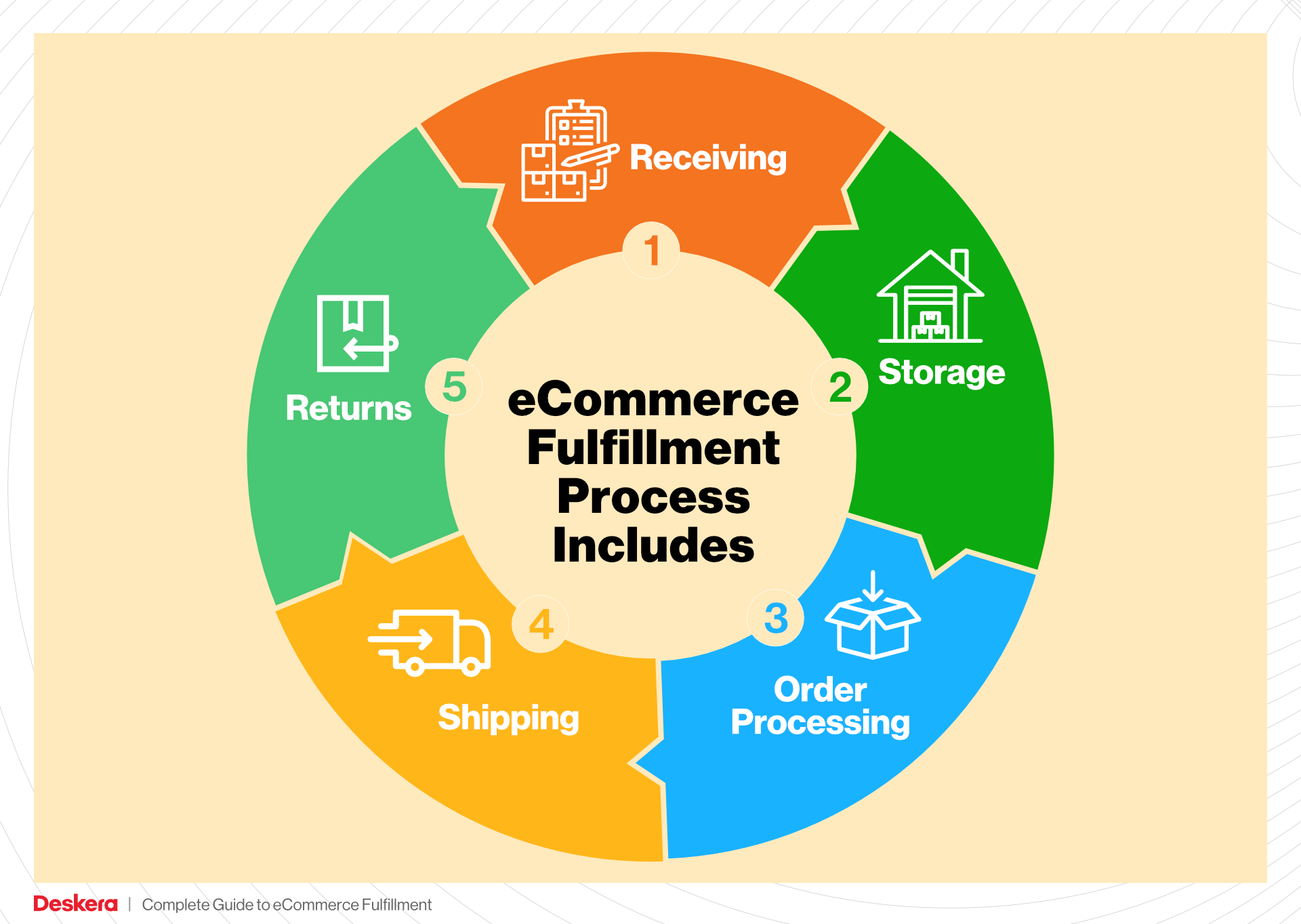
Packing is important not only for protecting the product but also for enhancing the customer experience. A well-packed order reflects professionalism and care, which can foster customer loyalty. A key term related to this step is packing slips, which are documents that accompany the order and provide details about the items included. They are essential for customer reference and can help with returns or exchanges.
5. Shipping & Delivery
The final step in the order fulfillment process is shipping and delivery. Once the order is packed, it is handed off to a shipping carrier for delivery to the customer’s address. This phase encompasses selecting the right shipping method based on factors like cost, delivery speed, and customer preference.
Shipping is crucial because it directly affects customer satisfaction and retention. Timely and accurate deliveries can enhance the overall shopping experience and encourage repeat business. A term that plays a significant role in this step is last-mile delivery, which refers to the final leg of the shipping journey. Efficient last-mile delivery is essential for meeting customer expectations, especially in a competitive e-commerce landscape.
Conclusion
In summary, the order fulfillment process from the ‘buy’ button to the customer’s door consists of five key steps: receiving inventory, warehouse storage, order picking, order packing, and shipping & delivery. Understanding and optimizing each step is essential for e-commerce businesses looking to scale effectively. By implementing best practices and leveraging key terms associated with each phase, businesses can enhance their operational efficiency and improve customer satisfaction, ultimately driving growth in a competitive market.
Comparing Fulfillment Models: In-House vs. 3PL vs. Dropshipping
Fulfillment Models Comparison
| Model | Who Handles Inventory | Best For (Business Stage) | Key Advantage | Key Disadvantage |
|---|---|---|---|---|
| In-House Fulfillment | Business | Established, larger businesses | Complete control over operations | High fixed costs and overhead |
| Third-Party Logistics (3PL) | Third-party provider | Growing businesses | Scalability and flexibility | Less control over inventory handling |
| Dropshipping | Supplier | Startups and small businesses | Low upfront investment | Lower profit margins and shipping delays |
In-House Fulfillment
In-house fulfillment involves managing all aspects of inventory and order processing within your own facilities. This model is best suited for established businesses that have the resources to handle logistics internally. The key advantage of in-house fulfillment is the complete control it offers over operations, allowing businesses to manage inventory levels, order accuracy, and shipping times directly. This level of control can lead to improved customer satisfaction, as businesses can tailor their fulfillment processes to meet specific customer needs. However, the disadvantages are significant; high fixed costs associated with maintaining a warehouse, employing staff, and investing in technology can strain the budget, especially for smaller businesses. Additionally, as demand fluctuates, businesses may find themselves overstaffed or under-resourced, leading to inefficiencies.
Third-Party Logistics (3PL)
Third-party logistics (3PL) refers to outsourcing logistics and fulfillment processes to an external provider. This model is particularly advantageous for growing businesses that need to scale operations without the burden of managing warehousing and shipping themselves. The primary benefit of partnering with a 3PL provider is the scalability and flexibility it offers. Businesses can easily adjust their logistics needs based on demand fluctuations without the need for significant capital investment in infrastructure. Furthermore, 3PL providers often have established networks and expertise, which can enhance shipping efficiency and reduce costs. However, the key disadvantage lies in the loss of control over inventory management and fulfillment processes. Businesses may face challenges in maintaining brand consistency and customer service levels if the 3PL provider does not align with their operational standards.
Dropshipping
Dropshipping is a fulfillment model where the retailer does not hold inventory but instead transfers customer orders directly to the supplier, who then ships the products on behalf of the retailer. This model is ideal for startups and small businesses looking to minimize upfront investment and operational complexity. The primary advantage of dropshipping is the low barrier to entry; businesses can start selling products without the need to invest in inventory or warehousing. This flexibility allows entrepreneurs to test new products and market trends without significant financial risk. However, dropshipping comes with its own set of challenges. Profit margins tend to be lower compared to traditional models, as suppliers often charge higher prices for individual items. Additionally, businesses have less control over shipping times and inventory levels, which can lead to customer dissatisfaction if suppliers experience delays or stockouts.
Conclusion
Choosing the right fulfillment model is crucial for the success of an e-commerce business. Each model—whether in-house fulfillment, third-party logistics, or dropshipping—offers unique advantages and challenges. In-house fulfillment provides control but at a high cost, 3PL offers scalability but with less control, and dropshipping allows for low investment but can limit profitability. Business owners must evaluate their current stage, resources, and long-term goals to determine which model aligns best with their operational needs and customer expectations. By understanding these fulfillment models, e-commerce businesses can make informed decisions that facilitate growth and enhance customer satisfaction.
A Deep Dive into Amazon FBA: Pros, Cons, and Who It’s For
Understanding Fulfillment by Amazon (FBA)
Fulfillment by Amazon (FBA) is a service that allows e-commerce sellers to store their products in Amazon’s fulfillment centers. Amazon then takes care of storage, packaging, and shipping of these products directly to customers. This service enables sellers to leverage Amazon’s extensive logistics network and customer service capabilities, effectively allowing them to focus on growing their business rather than managing logistics.
How FBA Works
-
Setup: Sellers create an Amazon seller account and enroll in the FBA program. They can then list their products on Amazon.
-
Inventory Storage: Sellers send their products to Amazon’s fulfillment centers. Once received, Amazon takes over the storage of the inventory.
-
Order Processing: When a customer places an order for a product fulfilled by Amazon, the fulfillment center picks, packs, and ships the item directly to the customer.
-
Customer Service: Amazon handles customer service and returns for FBA orders, which can significantly reduce the workload for sellers.
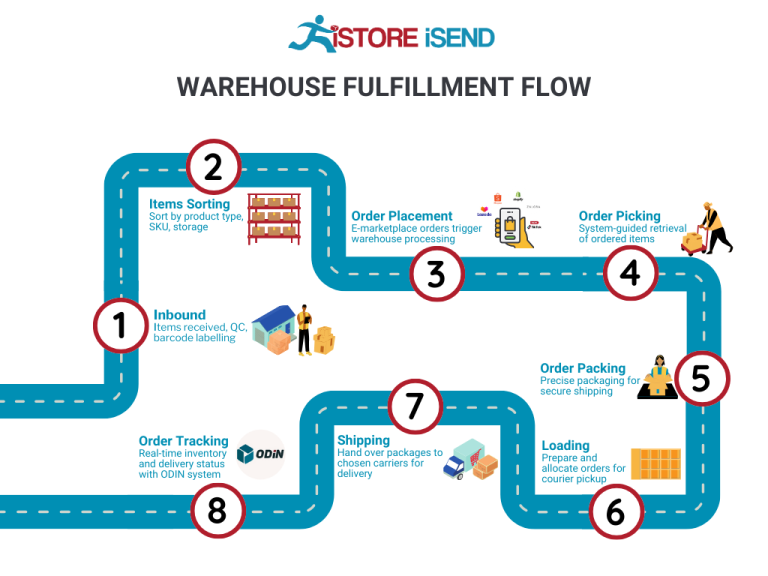
-
Tracking and Reporting: Sellers can track their inventory levels, sales, and performance metrics through the Amazon Seller Central dashboard.
Pros of Using Amazon FBA
-
Prime Eligibility: Products fulfilled by Amazon are eligible for Amazon Prime. This increases visibility and sales potential, as millions of Prime members prefer to buy items that qualify for fast, free shipping.
-
Customer Trust: Amazon’s reputation as a reliable retailer extends to FBA products. Customers are more likely to purchase items backed by Amazon’s fulfillment service due to the perceived security and quality assurance.
-
Multi-Channel Fulfillment: FBA can also be utilized for fulfilling orders from other sales channels, such as eBay or a seller’s own website. This allows sellers to streamline their logistics and maintain a single inventory pool.
-
Scalability: As sales grow, sellers can easily scale their operations without needing to invest in their own warehousing and shipping infrastructure. Amazon’s network can handle increased order volumes seamlessly.
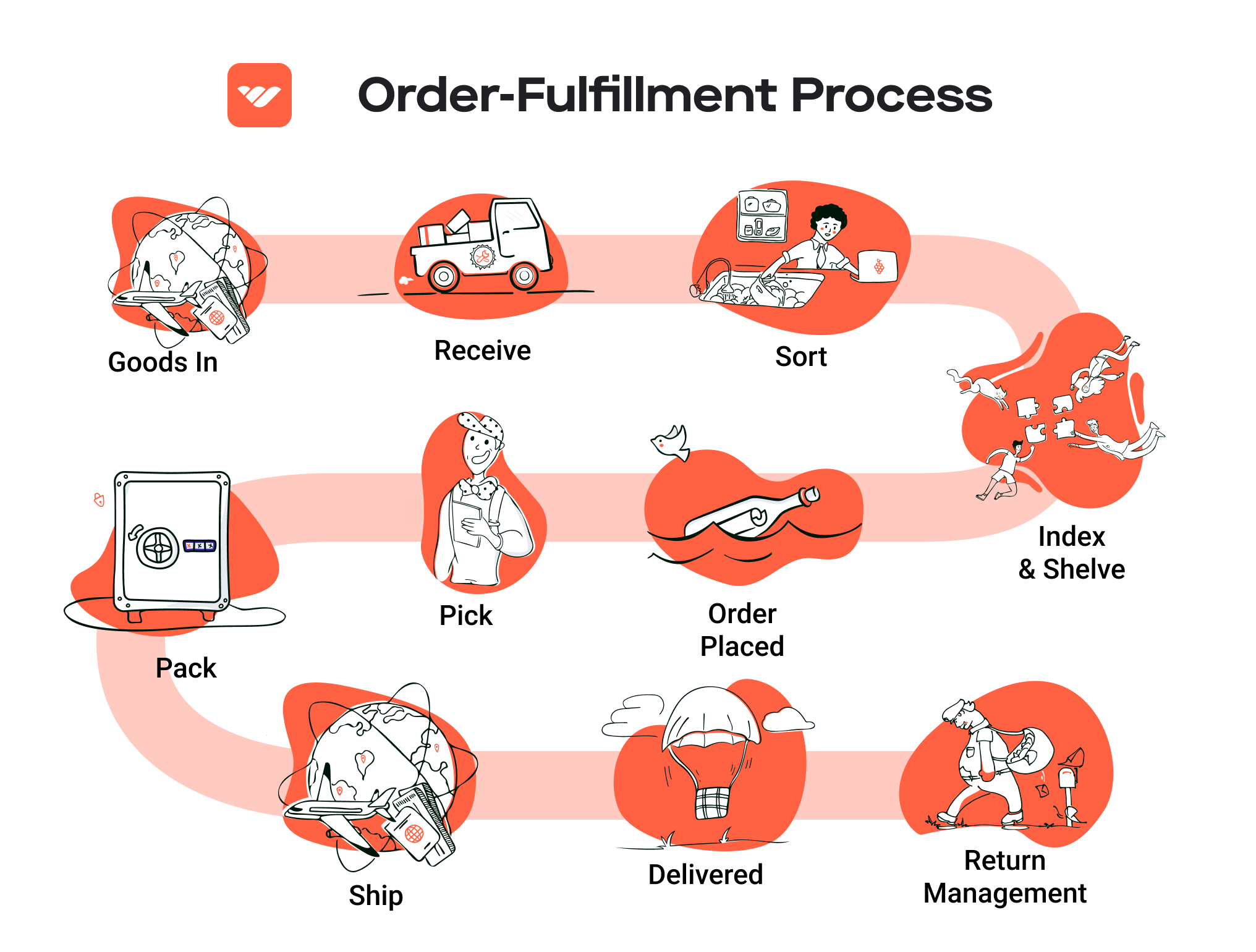
-
Time-Saving: By outsourcing fulfillment, sellers can dedicate more time to marketing, product development, and customer engagement rather than logistics and shipping.
Cons of Using Amazon FBA
-
High Fees: FBA has various fees, including storage fees and fulfillment fees, which can eat into profit margins. Sellers must carefully calculate these costs to ensure that their pricing remains competitive while still being profitable.
-
Strict Inventory Rules: Amazon has stringent guidelines regarding inventory management. Sellers must adhere to these rules, which can be cumbersome and may lead to penalties for non-compliance.
-
Commingling Risks: Products from different sellers may be stored together in Amazon’s warehouses, leading to potential issues with product quality and authenticity. If a customer receives a damaged or counterfeit item, it can harm the seller’s reputation, even if the issue originated from another seller’s product.
-
Limited Control: Once products are in Amazon’s fulfillment centers, sellers have limited control over the handling and shipping processes. Any issues that arise in these areas are managed by Amazon, which can lead to frustration for sellers.
-
Inventory Management Challenges: Managing inventory levels can be tricky. Sellers must forecast demand accurately to avoid stockouts or overstocking, which can lead to additional fees or lost sales.
Who is FBA Best For?
FBA is particularly beneficial for e-commerce businesses that:
-
Sell High-Volume Products: Sellers with a significant number of sales can take advantage of Amazon’s logistics to manage their inventory and shipping more efficiently.
-
Focus on Growth: Entrepreneurs looking to scale their business rapidly without the headaches of logistics may find FBA a suitable option.
-
Desire Prime Eligibility: Brands aiming to reach Amazon Prime customers should consider FBA to enhance their product visibility and attract a broader audience.
-
Lack Warehousing Solutions: Newer businesses or those without established warehousing solutions can benefit from FBA’s storage and fulfillment services.
-
Want to Improve Customer Trust: Brands that are new to the marketplace or that lack a strong reputation may find that FBA helps build trust through Amazon’s established brand.
In conclusion, while Fulfillment by Amazon offers numerous advantages that can significantly benefit e-commerce sellers, it also comes with challenges that require careful consideration. By understanding both the pros and cons, businesses can make informed decisions about whether FBA aligns with their operational goals and growth strategies.
Core Services Offered by Fulfillment Centers
Inventory Management & Warehousing
Inventory management and warehousing are foundational services provided by fulfillment centers. This process involves the systematic tracking of inventory levels, orders, sales, and deliveries. Fulfillment centers utilize advanced inventory management systems to ensure that stock levels are accurate and up-to-date, which helps prevent stockouts or overstock situations.
For e-commerce businesses, effective inventory management translates into several advantages. Firstly, it enhances operational efficiency by ensuring that products are readily available when customers place orders, thus improving customer satisfaction and retention. Additionally, accurate inventory tracking allows businesses to make informed decisions regarding purchasing and stock levels, ultimately reducing holding costs and minimizing waste. This is particularly crucial for seasonal products where demand can fluctuate significantly.
Moreover, warehousing services often include climate control, security, and organization of goods, which can be particularly beneficial for businesses dealing with perishable or high-value items. The ability to leverage a fulfillment center’s warehousing capabilities allows e-commerce businesses to focus on core activities such as marketing and product development while ensuring their inventory is managed professionally.
Pick and Pack Services
Pick and pack services refer to the process of selecting (picking) items from the warehouse shelves based on customer orders and then packaging (packing) those items for shipment. Fulfillment centers employ trained staff and sophisticated technology to streamline this process, ensuring accuracy and speed.
The benefits of pick and pack services for e-commerce businesses are significant. First, they help reduce order processing times, which is critical in today’s fast-paced market where customers expect rapid delivery. By outsourcing this process to a fulfillment center, businesses can ensure that orders are fulfilled quickly and accurately, leading to improved customer satisfaction.
Additionally, fulfillment centers often utilize automation and advanced picking systems (like barcode scanning) that minimize human error, which can further enhance order accuracy. This reliability is vital for maintaining a positive brand image and customer trust. Furthermore, by utilizing pick and pack services, businesses can scale their operations without the need for additional investment in infrastructure or labor, thereby allowing for flexibility as sales volumes change.
Kitting and Assembly
Kitting and assembly involve the process of grouping individual items together into a single kit or assembling products before they are shipped to customers. This service can include anything from bundling related products to creating complex assembled items that require multiple components.
For e-commerce businesses, kitting and assembly offer several strategic advantages. By providing customers with pre-assembled kits, businesses can enhance the shopping experience, making it easier for customers to purchase related items without having to search for each component individually. This not only increases the average order value but also improves customer satisfaction.
Moreover, kitting can lead to reduced shipping costs since businesses can ship a single package instead of multiple individual items. This can also result in faster fulfillment times since the fulfillment center can prepare kits in advance and simply ship them out upon order. Additionally, kitting services can free up valuable warehouse space, as businesses can store items in kits rather than individually, leading to more efficient inventory management.
Returns Management (Reverse Logistics)
Returns management, often referred to as reverse logistics, is the process of handling product returns from customers. Fulfillment centers provide a streamlined approach to processing returns, which includes inspecting returned items, restocking them, and managing refunds or exchanges.
For e-commerce businesses, effective returns management is crucial. A well-organized returns process can significantly enhance customer loyalty and retention. When customers know they can easily return items, they are more likely to make a purchase, alleviating concerns about product fit, quality, or satisfaction. This is especially important in industries like fashion and electronics, where return rates can be high.
Additionally, fulfillment centers often have the infrastructure in place to handle returns efficiently, including systems for tracking returned inventory and managing restocking processes. This efficiency not only saves time and reduces costs but also allows businesses to recover value from returned items more effectively. Furthermore, by analyzing return data, businesses can gain insights into product performance and customer preferences, which can inform future product development and inventory decisions.
In summary, leveraging the core services offered by fulfillment centers can significantly enhance the operational capabilities of e-commerce businesses. By outsourcing inventory management, pick and pack services, kitting and assembly, and returns management, businesses can focus on growth and customer satisfaction while benefiting from the expertise and resources of fulfillment centers.
How to Choose a Fulfillment Partner: A 6-Point Checklist
Location & Warehouse Network
The location of your fulfillment partner’s warehouses is crucial for optimizing shipping times and costs. A strategically placed warehouse network can significantly reduce transit times to your customers, enhancing their satisfaction and potentially increasing repeat business.
Questions to Ask:
– Where are your warehouses located, and how do they align with our primary customer base?
– What is the average shipping time from your facilities to our target regions?
– Do you have plans for expanding your warehouse network in the near future?
Technology & Integrations
In today’s digital age, the technology used by your fulfillment partner can make or break your operations. Efficient order processing, inventory management, and tracking capabilities are essential. Ensure that the partner can seamlessly integrate with your existing e-commerce platform to provide real-time updates and insights.
Questions to Ask:
– What warehouse management system (WMS) do you use, and how does it support our operations?
– Can you integrate with our e-commerce platform and other systems (like ERP, CRM)?
– How do you handle inventory tracking and reporting?
Specializations (e.g., cold storage, oversized items)
Depending on your product offerings, you may need a fulfillment partner that specializes in certain types of storage or handling. For example, if you sell perishable goods, you’ll need a partner with cold storage capabilities. Similarly, if your products are bulky or require special handling, ensure your partner has the necessary expertise.
Questions to Ask:
– What types of products do you specialize in handling, and do you have experience with our product category?
– Can you accommodate special storage needs, such as temperature control or hazardous materials?
– What are your processes for handling returns and damaged goods?
Scalability & Capacity
As your business grows, your fulfillment partner should be able to scale with you. Understanding their capacity to handle increased order volumes without compromising service quality is vital for long-term success.
Questions to Ask:
– What is your current capacity, and how do you manage peak seasons or surges in demand?
– Can you provide case studies or examples of how you’ve scaled operations for previous clients?
– What are the limitations of your facility in terms of space and technology?
Pricing and Contracts
Transparent pricing structures and flexible contracts are essential when evaluating potential fulfillment partners. Understanding all costs upfront, including hidden fees or surcharges, will help you make informed decisions that align with your budget.
Questions to Ask:
– What are your pricing models, and what factors can influence the costs?
– Are there any additional fees (like for storage, pick and pack, shipping) that we should be aware of?
– What is the duration of the contract, and what are the terms for termination or renewal?
Customer Support & Reviews
The level of customer support offered by a fulfillment partner can significantly impact your operations. Responsive support can help resolve issues quickly and maintain a smooth workflow. Additionally, seeking out reviews and testimonials can provide insights into their reliability and service quality.
Questions to Ask:
– What support services do you offer (e.g., dedicated account managers, 24/7 support)?
– Can you provide references from current or past clients?
– How do you handle issues or disputes, and what is your process for ensuring customer satisfaction?
Conclusion
Choosing the right fulfillment partner is a critical decision that can affect your e-commerce business’s efficiency, customer satisfaction, and ultimately, its growth trajectory. By using this checklist, you can ensure that you evaluate potential partners comprehensively and make informed choices that align with your business needs. Take the time to conduct thorough due diligence and prioritize partners who demonstrate a commitment to service excellence and scalability.
Understanding Fulfillment Pricing: A Breakdown of Common Fees
Initial Setup Fees
Initial setup fees are typically incurred when you first engage a fulfillment service provider. This fee can vary significantly based on the complexity of your operations and the specific needs of your business. Common elements included in this fee may be the integration of your e-commerce platform with the fulfillment system, configuration of the inventory management software, and any necessary training for your staff.
Calculation of initial setup fees often involves a flat rate or hourly charges based on the time and resources required for integration. For example, if you require a custom solution to integrate your sales channels, the fulfillment center may charge an hourly rate for the technical team involved in setup. It is advisable to clarify all components included in this fee upfront to avoid unexpected costs.
Receiving Fees
Receiving fees are charged when your inventory arrives at the fulfillment center. These fees cover the labor and processes involved in unloading, inspecting, and entering your products into the warehouse management system (WMS).
Typically, receiving fees are calculated based on the number of pallets or cartons received, with charges per unit. For instance, if you send a shipment containing ten pallets, the fulfillment center might charge a per-pallet fee, which can range from $20 to $50 per pallet, depending on the provider and the complexity of the receiving process. To minimize receiving fees, consolidate shipments and ensure that products are correctly labeled and packaged.
Storage Fees (per pallet/bin)
Storage fees are incurred for keeping your inventory within the fulfillment center. These fees can be charged on a monthly basis and are often calculated based on the space your inventory occupies, typically measured in pallets or bins.
For example, a fulfillment center might charge $15 to $30 per pallet per month. Some providers also offer tiered pricing where the cost per pallet decreases as the volume of storage increases. It’s important to monitor your inventory turnover and avoid overstocking, as high storage fees can quickly erode profit margins. Additionally, some fulfillment centers may charge for additional services, such as climate control or specialized storage conditions.
Pick & Pack Fees (per item/order)
Pick and pack fees are one of the most significant components of fulfillment costs. These fees cover the labor involved in selecting items from storage and packaging them for shipment.
The calculation for pick and pack fees can vary widely. Some fulfillment centers charge a flat fee per order, while others charge per item picked. For example, you might encounter a fee structure like $2.50 per order plus $0.50 for each item picked. If you have a high volume of orders with multiple items, this can add up quickly. To optimize costs, consider simplifying your product offerings or bundling items to reduce the number of picks per order.
Shipping Fees
Shipping fees are charged for the transportation of your products from the fulfillment center to your customers. These fees depend on various factors including the shipping method chosen (standard, expedited, etc.), the destination, and the weight and dimensions of the packages.
Shipping fees are typically calculated based on carrier rates, which can vary significantly. Many fulfillment centers have partnerships with major carriers and may offer discounted rates. For example, shipping a package via standard ground service might cost anywhere from $5 to $15 for domestic shipments, while international shipping can be significantly more expensive. To minimize shipping costs, consider using flat-rate shipping options or negotiating shipping rates with your fulfillment partner.
Conclusion: Getting an Accurate Quote
To obtain an accurate quote for fulfillment services, it’s essential to provide potential partners with detailed information about your business operations. Share specifics such as:
- Order Volume: Estimate your monthly order volume and the average number of items per order.
- Product Dimensions and Weight: Provide details about your products, including size and weight, which will influence storage and shipping fees.
- Shipping Destinations: Indicate where your products are most frequently shipped to, as this affects shipping costs.
- Service Needs: Clarify any additional services you may require, such as kitting, returns processing, or custom packaging.
By offering a comprehensive overview of your business requirements, you can ensure that the quotes you receive are not only accurate but also tailored to your specific needs, allowing for better budgeting and financial planning as you scale your e-commerce operations.
Frequently Asked Questions (FAQs) about Fulfillment
1. What is the purpose of the Amazon Prime fulfillment center in Gwinnett?
The Amazon Prime fulfillment center in Gwinnett serves as a logistics hub designed to efficiently process and ship customer orders for Amazon Prime members. This facility enables Amazon to maintain quick delivery times, often within one or two days, by strategically locating its operations close to a large customer base in the southeastern United States.
2. How does the Gwinnett fulfillment center impact local businesses?
The fulfillment center creates numerous job opportunities—approximately 1,000 new positions—helping to boost the local economy. Additionally, it can provide local businesses with increased access to Amazon’s vast customer base, potentially driving sales through the Amazon marketplace.
3. What differentiates a fulfillment center from a warehouse?
A fulfillment center focuses on processing customer orders, including picking, packing, and shipping products directly to consumers. In contrast, a warehouse primarily serves as a storage space for goods, with limited order fulfillment capabilities. Fulfillment centers are equipped with advanced technology and processes to ensure timely delivery and customer satisfaction.
4. What is a 3PL (Third-Party Logistics)?
A 3PL, or third-party logistics provider, is a service that businesses can hire to manage their logistics operations, including warehousing, order fulfillment, and shipping. Utilizing a 3PL can help e-commerce businesses scale their operations without the need for significant capital investment in logistics infrastructure.
5. How much do fulfillment services cost?
Fulfillment service costs can vary widely based on factors such as order volume, storage space, and specific services required. Generally, costs may include a combination of storage fees, pick and pack fees, and shipping costs. Businesses should conduct thorough market research to find a fulfillment partner that aligns with their budget and operational needs.
6. What benefits does Amazon Prime provide for customers using the Gwinnett fulfillment center?
Amazon Prime members benefit from expedited shipping options, access to exclusive deals, and a vast selection of products. The Gwinnett fulfillment center enhances these advantages by ensuring faster processing and delivery of orders to customers in the region.
7. Can small businesses use the Gwinnett fulfillment center for their products?
Yes, small businesses can utilize Amazon’s fulfillment services by enrolling in programs like Fulfillment by Amazon (FBA). This allows small businesses to store their products in Amazon’s warehouses, where they can take advantage of Amazon’s logistics network and reach a broader audience.
8. What technologies are utilized in fulfillment centers like the one in Gwinnett?
Fulfillment centers employ a range of advanced technologies, including automated picking systems, inventory management software, and tracking systems to optimize the order fulfillment process. These technologies help reduce errors, improve efficiency, and enhance overall customer satisfaction.
9. How does the fulfillment center ensure order accuracy?
Order accuracy is maintained through several processes, including barcode scanning, automated sorting, and quality checks during the packing process. These measures help minimize errors and ensure that customers receive the correct items in their orders.
10. What should businesses consider when choosing a fulfillment partner?
When selecting a fulfillment partner, businesses should evaluate factors such as shipping speed, storage capacity, technology integration, pricing structure, and customer service. It’s essential to choose a partner that aligns with your business goals and can scale with your growth.
Conclusion: Is Outsourcing Fulfillment the Right Move for Your Business?
Evaluating the Benefits of Outsourcing Fulfillment
In the dynamic landscape of e-commerce, outsourcing fulfillment can be a strategic decision that propels your business toward sustainable growth. By partnering with a fulfillment service, you can save significant time and resources. These services handle the intricate processes of picking, packing, and shipping, allowing you to focus on core business activities such as marketing and product development. This not only enhances operational efficiency but also provides you with the bandwidth to innovate and engage with your customers more effectively.
Scalability is another compelling advantage of outsourcing fulfillment. As your business grows, so do the complexities of your logistics. A dedicated fulfillment partner can seamlessly adapt to your increasing order volumes, ensuring that you maintain a high level of customer satisfaction without the need for substantial investments in infrastructure or workforce. This agility can be a game-changer, especially during peak seasons or when launching new products.
Moreover, leveraging the expertise of a fulfillment center can enhance your service offerings. Established fulfillment partners often come with advanced technology and industry knowledge that can improve accuracy, reduce shipping times, and provide insights into best practices. This means you can benefit from an optimized supply chain without having to develop these capabilities in-house.
However, the success of outsourcing fulfillment hinges on selecting the right partner. Conduct thorough due diligence to ensure that the fulfillment service aligns with your business goals and can support your growth trajectory.
Call to Action
As you consider the potential of outsourcing your fulfillment, take a moment to audit your current shipping processes. Assess whether your existing operations are meeting your growth ambitions and customer expectations. If you find gaps or inefficiencies, it may be time to explore fulfillment partnerships that can elevate your business to new heights. Engage with potential partners, ask the right questions, and make an informed decision that paves the way for your future success.
Important Disclaimer
⚠️ Important Disclaimer
The information in this guide is for educational purposes. Fulfillment services, pricing, and platform features change frequently. Always conduct your own due diligence and consult with providers directly before making business decisions.
